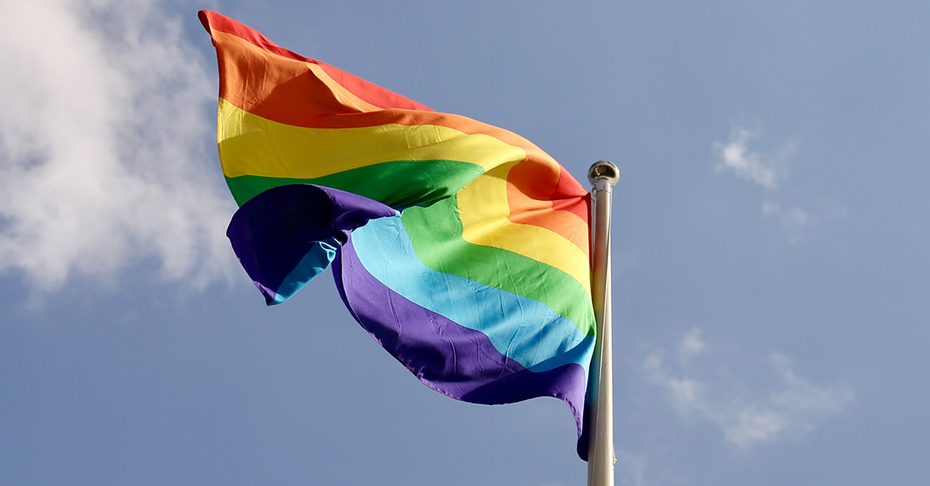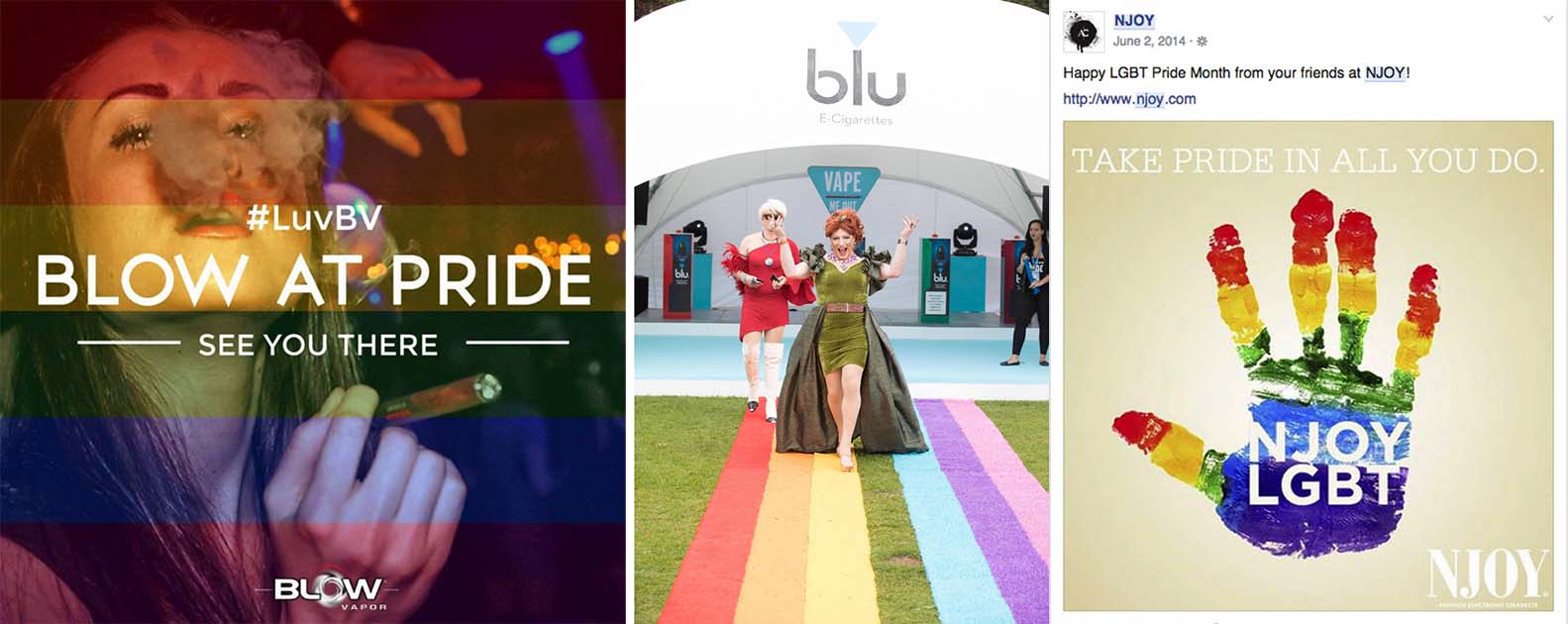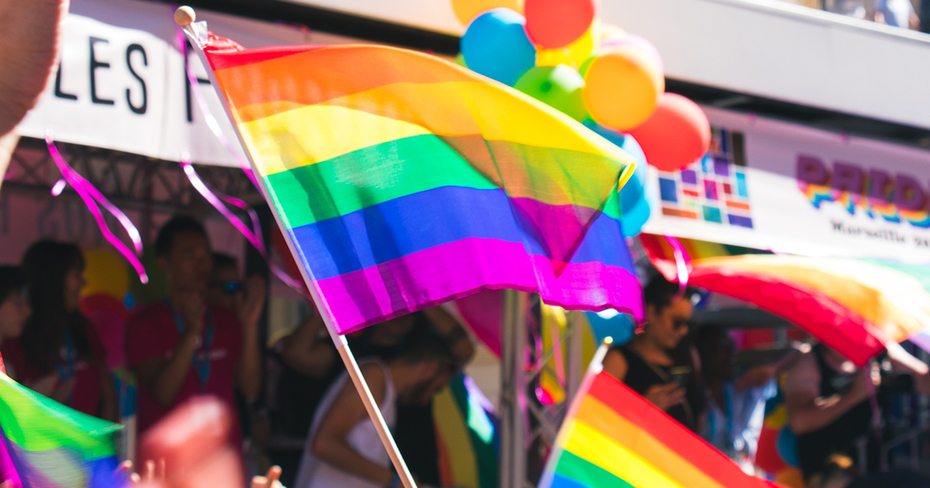Rising vaping rates among lesbian, gay, and bisexual young people outpace peers, widening tobacco use gap
Research has long shown that lesbian, gay, and bisexual individuals use tobacco products at higher rates than their heterosexual peers, due, in part, to decades of tobacco industry efforts to target this population. New Truth Initiative® research identifies that this trend is worsening — and extends to e-cigarettes. Between 2020 and 2021, e-cigarette use rates rose at higher rates among lesbian, gay, and bisexual youth compared to heterosexual youth. These disparate increases in vaping threaten to widen the gap in nicotine addiction and physical and mental health concerns in a population already burdened by discrimination and stigma.

Between 2020 and 2021, e-cigarette use rates rose at higher rates among lesbian, gay, and bisexual youth compared to heterosexual youth.
E-CIGARETTE USE ACCELERATES AMONG LESBIAN, GAY, AND BISEXUAL YOUNG PEOPLE
Lesbian, gay, and bisexual youth and young adults use and try e-cigarettes at a higher rate than their heterosexual peers, according to an analysis of Truth Initiative surveys conducted in 2020 and 2021. The analysis uses data from the 2020 and 2021 Truth Longitudinal Cohort survey, a national cohort established in 2014 to evaluate truth®, one of the largest and most successful youth tobacco prevention campaigns in the United States. Because the survey asked about sexual orientation but not gender identity, results from this survey focus only on lesbian, gay, and bisexual individuals — referred to in this report as LGB. Truth Initiative aims to update future data collections to include transgender individuals.
The survey was administered in 2020 to 7,003 15-30-year-olds, of whom 1,018 were LGB, and in 2021 to 6,411 14-33-year-olds, 1,037 of whom identified as LGB. Survey results indicate that rates of LGB youth and young adults ever trying and currently using e-cigarettes increased between 2020 and 2021:
- Higher rates of trying e-cigarettes: Young people who identify as LGB reported that they had ever vaped at much higher rates than their heterosexual peers (52.1% vs 38.6%).
- Higher rates of currently using e-cigarettes: In 2021, LGB young people currently vaped at higher rates than their heterosexual peers (19.8% vs. 13.2%).
- Rates increase over time: Between 2020 and 2021, the difference between LGB and heterosexual young people who currently vape increased by 32%, and those who had ever tried e-cigarettes increased by 26%.
While current and ever e-cigarette use increased over time among Truth Initiative’s entire survey sample, LGB e-cigarette use increased more than heterosexual e-cigarette use, effectively widening the gap between vaping rates based on sexual orientation, pointing to growing problems with vaping use in this population.

LGB e-cigarette use increased more than heterosexual e-cigarette use, effectively widening the gap between vaping rates based on sexual orientation.
Expanding decades of targeted tobacco marketing to e-cigarettes
The tobacco industry has a well-documented history of targeting the LGBT community since the 1990s, including advertising in LGBT publications, using corporate philanthropy as “evidence” of its support of the LGBT community, and hosting community outreach efforts. In 1995, Tobacco giant R.J. Reynolds’ created “Project SCUM” (Sub-Culture Urban Marketing) to boost cigarette sales by targeting gay men and homeless individuals with advertisements and displays placed in communities and stores. Tactics continue to evolve, extending to corporate efforts to be named LGBT-friendly workplaces. For example, Reynolds American Inc. was designated a “Best Place to Work for LGBTQ Equality” by the Human Rights Campaign in 2020, despite its history of targeted marketing.
Now, e-cigarette companies continue to target the LGBT community by sponsoring events, including the e-cigarette company VaporFi’s sponsorship of an annual gay pride festival in Miami. As a result, LGBT adults have seen and heard more e-cigarette ads than non-LGBT adults, and there is evidence that this trend affects LGBT youth. Further research is needed to determine the effect of Big Tobacco’s marketing on LGBT e-cigarette use.

WHY ARE LGB VAPING RATES INCREASING FASTER THAN HETEROSEXUAL VAPING?
Sexual minorities have used tobacco at higher rates than their heterosexual counterparts for years. Past research has shown that lesbian, gay, and bisexual adults smoked cigarettes at rates significantly higher than straight adults and were nearly twice as likely to use e-cigarettes and little cigars as their straight peers. Widening disparities in LGB tobacco use rates may be intertwined with myriad issues facing this community, including sustained minority stress and deteriorating mental health exacerbated by the COVID-19 pandemic and an increasingly hostile political environment that has fueled increased violence, hate speech, and discriminatory legislation against the LGBT community.
MINORITY STRESS INCREASES E-CIGARETTE USE AMONG LGB INDIVIDUALS
Research shows that stress related to homophobia and transphobia increases e-cigarette use among LGBT youth. Violence, harassment, bullying, and discrimination contribute to more stress among LGBT youth.
- Gender- and sexuality-based harassment has been linked to increased e-cigarette use among LGBT high school students.
- LGB young adults report rates of physical and sexual abuse two to three times higher than their non-sexual minority peers. These adverse childhood experiences have been linked to increased odds of e-cigarette use among sexual minorities.
Nicotine use and mental health
Nicotine use can worsen mental health symptoms, including feelings of anxiety and depression, but about half of young vapers who vaped frequently reported that they need to vape to cope with stress or anxiety. LGBT youth already face a mental health crisis largely linked to discrimination, bullying, and a lack of support from families and schools. Tobacco industry marketing tailored to the LGBT community taps into the mental health concerns of this vulnerable population by speaking to desire for acceptance by members of a marginalized population and a need to cope with the stress of discrimination. [See our report on “Colliding Crises: Youth Mental Health and Nicotine Use.”]
RECENT EVENTS HAVE DAMAGED MENTAL HEALTH AMONG THE LGB COMMUNITY
Lawmakers across the country introduced and passed a record number of anti-LGBT bills in 2021, warranting investigation into how these events may be affecting mental health outcomes among LGBT youth. A recent report from the Trevor Project identified that 66% of LGBTQ+ youth reported that the conversation around new policies negatively affected their mental health.
Additionally, the ongoing COVID-19 pandemic has disproportionately impacted youth. LGBT youth reported worse mental health outcomes attributable to the pandemic than non- LGBT youth, and reported feeling less connected to their families and less safe at home. LGBT youth populations often experience unsupportive home lives and, without the peer support experienced from their larger community, many youth had challenging lockdown periods during the early months of the pandemic. As a result of hostile home lives and traumatic lockdowns, LGBT youth experienced enhanced mental health consequences from the pandemic including elevated levels of depression, PTSD, and COVID-19 related worries and grief. Amid great stress, LGBT people are smoking and vaping to cope with COVID-19 related stress and anxiety.
For transgender Americans, 2021 was the deadliest year on record. Greater homophobic and transphobic violence and discrimination is associated with higher odds of smoking cigarettes. More research is needed to determine if violence and discrimination is also associated with higher e-cigarette use. Findings that vaping is associated with elevated stress and anxiety suggest that this may well be the case.

Researchers need to be able to accurately measure vaping rates in the LGBT community as a first step in tackling disparate vaping rates.
CALL TO ACTION: REDUCING VAPING RATES AMONG SEXUAL AND GENDER MINORITIES
Recent findings point to a growing problem of sexual minority youth vaping at rates higher than their heterosexual counterparts, and call for targeted research, cessation programs, and policy interventions to reduce vaping use and initiation among youth.
Truth Initiative recommends the following to further the work in this field and reduce the increasing gap in e-cigarette use:
- Improve data collection on topics including tobacco use rates, perceptions, and disease risk in the LGBT community to ensure a more robust picture of tobacco use among this group. Researchers need to be able to accurately measure vaping rates in the LGBT community as a first step in tackling disparate vaping rates. Surveys should ask about sexual orientation and gender identity as separate entities to avoid underestimating vaping rates.
- Conduct additional research on reducing vaping specifically in the LGBT community. Further research should identify effective methods to reduce e-cigarette use specifically among sexual and gender minority populations. These efforts should account for stressors specific to the LGBT community.
- Ensure access to cessation services and reduce barriers to care for the LGBT community. Cessation and outreach programs should be tailored and targeted to the unique challenges and experiences of LGBT youth.
- Address mental health concerns: Increasing access to mental health resources to combat the unique stressors felt by the LGBT community is key in addressing elevated risk of tobacco product use. This might include schools updating policies and statements on bullying, harassment, and discrimination, and facilitating platforms where LGBT individuals can plug into social support networks.
- Evaluate tobacco control policies in the community: Tobacco control policies should be evaluated on their effectiveness in reducing vaping rates specifically in the LGBT community. Additional research and updated policies on advertising, event sponsorship, and PR campaigns aimed at the LGBT community are critical.
The tobacco industry has invested significant resources to promote tobacco use to gender and sexual minorities. An equally ambitious research agenda is needed to combat these efforts to ensure that a vulnerable community does not continue vaping at disproportionately high rates.
*Terminology in this document varies and is based on the studies cited. Truth Initiative recognizes that some of these terms are no longer preferred in the LGBT community.
More in targeted communities
Want support quitting? Join EX Program
By clicking JOIN, you agree to the Terms, Text Message Terms and Privacy Policy.
Msg&Data rates may apply; msgs are automated.



